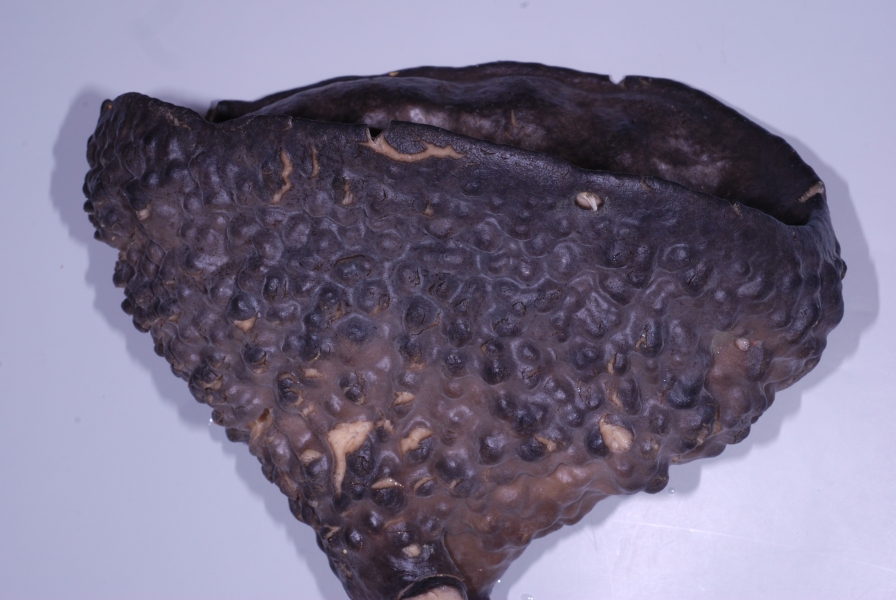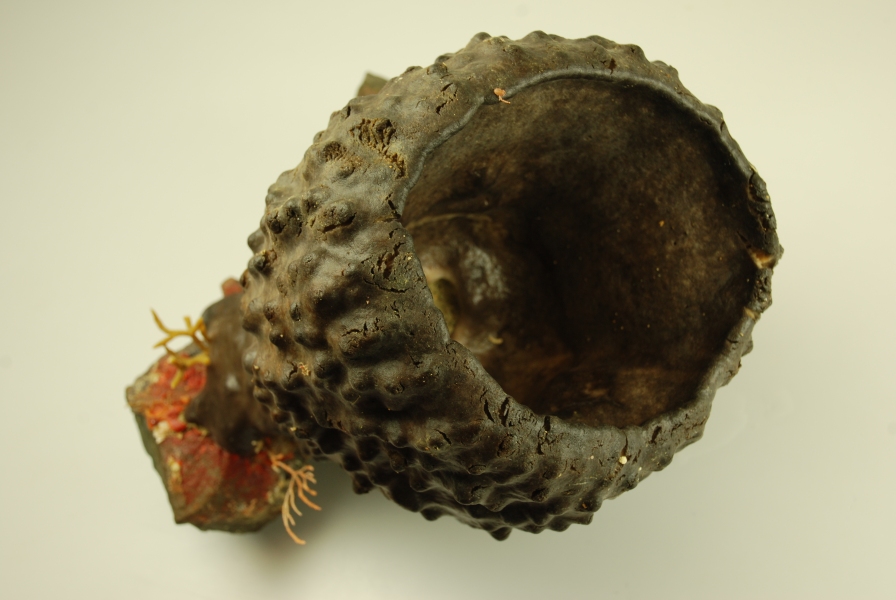In this week’s blog we explore Ecionemia alata (Dendy, 1924) commonly known as the purple cup or pillow sponge.
New Zealand has two endemic species of Ecionemia; E. alata, which is a deep grey, and E. novaezelandiae, which is cream to tan (1). Ecionemia alata grows to heights of 15 – 40 cm, with the largest ones covering areas of at least 1 square metre. These sponges form impressive gardens along New Zealand’s coastline from the Three Kings Islands south to the Chatham Rise. They are most commonly found from the intertidal to around 60 m under shaded ledges, in caves, on rocky reefs and other places out of direct sunlight. Interestingly, on sloping reefs, the sponges shape generally follows a ridge, lying perpendicular to the prevailing currents. On flat reefs, their shape is generally more oval (2).
Due to their size and location, Ecionemia alata can provide a soft recluse for other marine life. In the image below we see a lucky fish, a New Zealand blue cod, napping inside one at 54 m depth.
Check out what other fish can be found hiding in a purple pillow sponge. Our friend and professional underwater photographer Richard Robinson has photographed this sponge around the Poor Knights islands.
Want to know more about sponges? Check out Wellington South Coast Marine Reserve’s website for interesting facts on all things about sponges.
References:
- 1.Kelly M & Sim-Smith C (2012) A review of Ancorina, Stryphnus, and Ecionemia (Demospongiae, Astrophorida, Ancorinidae), with descriptions of new species from New Zealand waters. Zootaxa 3480: 1–47. Take a look at the first page of this paper here http://www.mapress.com/zootaxa/2012/f/z03480p047f.pdf
- 2.De Cook S (2010) New Zealand Coastal Marine Invertebrates. Volume 1. Canterbury University Press, Christchurch, 900 pp.


